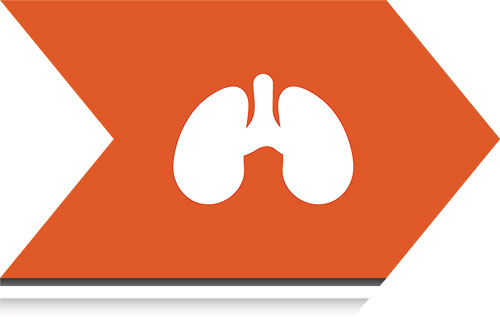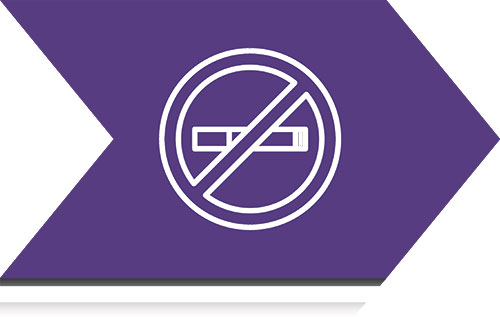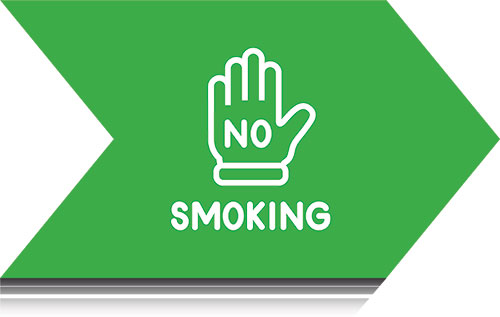No Ifs, Ands, or Butts…

 Reasons to Quit
Reasons to Quit
If you’re addicted to nicotine, you’ve got more than 5,000 reasons to quit. That’s the number of days the average smoker loses from his or her life. Fourteen years. Smoking damages more than just your lungs. It’s linked to serious oral health consequences, too, including oral cancer and gum disease. (Plus, smoking can stain teeth and cause bad breath.)

According to the Centers for Disease Control and Prevention, when you quit smoking, the negative effects of nicotine and tobacco almost immediately start to reverse.
- Within 20 minutes, your heart rate drops.
- Within 12 hours, carbon monoxide levels in your blood drop to normal.
- Within two weeks to three months, your overall circulation improves and lung function increases up to 30%.
- Within a year, your risk of having coronary artery disease is half that of someone who smokes!

- NRT provides nicotine without the other harmful components of tobacco smoke. Because nicotine is the addictive substance in tobacco, NRT allows you to focus on quitting the habit. Once you’ve changed your behavior, you can wean your body off the nicotine. Nicotine gums, patches, and lozenges can be bought over the counter. Nicotine sprays and inhalers are available by prescription. Talk to your medical professional about whether any of these are right for you, especially if you’re pregnant or have heart or circulatory disease.
- Prescription medication – including bupropion and varenicline – can help reduce the urge to smoke.
- Counseling and support programs can connect you with a motivating support system. Your dentist or doctor, local hospital, health department, or organizations such as the American Cancer Society can refer you to programs that are right for you.
These techniques often work best when used in combination with each other – such as therapy combined with a medication or NRT. Prior to undertaking any techniques, you should consult a qualified medical professional.

- Change your routine. Instead of lighting up after a meal, try brushing and flossing your teeth, or taking a walk. If your morning coffee ends with a cigarette, try switching to another drink.
- Wait a few minutes before lighting up; the craving usually lasts only a few minutes.
- Do something physical, like taking a walk, vacuuming, or cleaning the car.
- Change your environment. Go to a different room, or change what you were doing.
- Keep healthy snacks handy as cigarette substitutes, like carrots, celery sticks, pickles, apples, or pretzels.
The NCI suggests making your own list of things you can do at a moment’s notice when the urge strikes.
Quitting is tough. You are tougher. It may take several attempts to stop smoking. If one tool or strategy doesn’t work for you, try another. Keep trying and you will become an ex-smoker.

- National Network of Tobacco Cessation Quit Lines
– 800-QUIT-NOW. (It will connect you with the free Quit Line in your state.) - American Cancer Society – 800-227-2345.
- National Cancer Institute’s quit smoking website
- Delta Dental of New Jersey and Connecticut blog
 Download PDF
Download PDF
